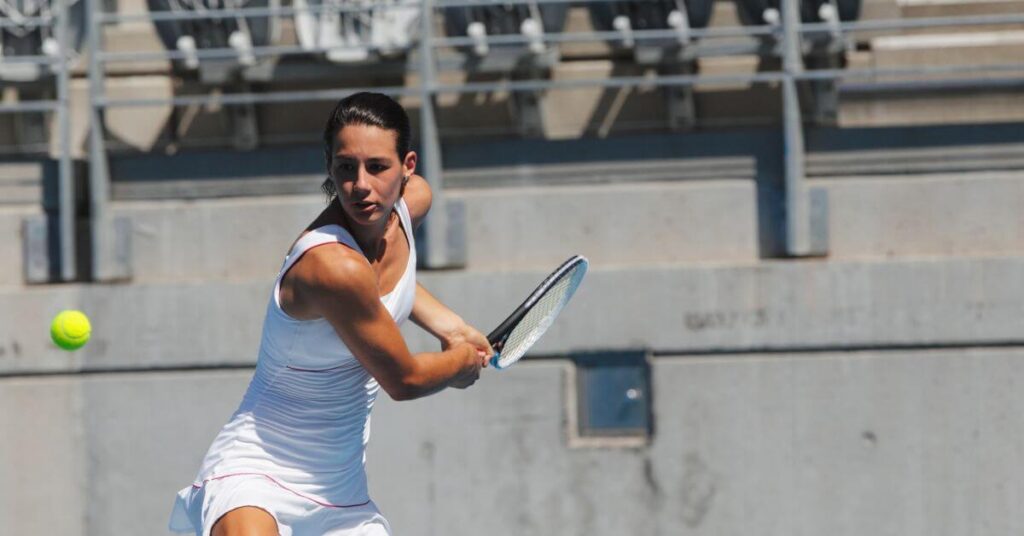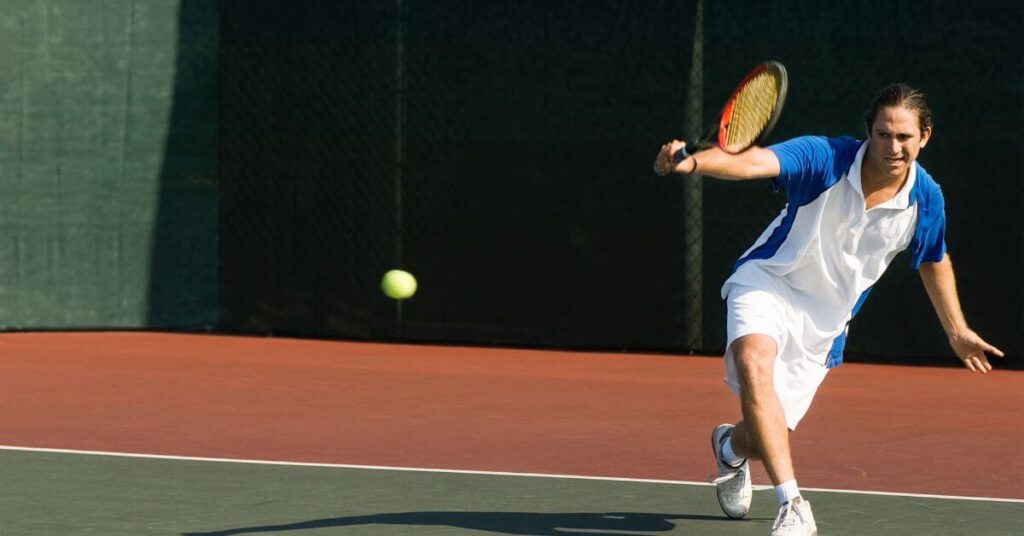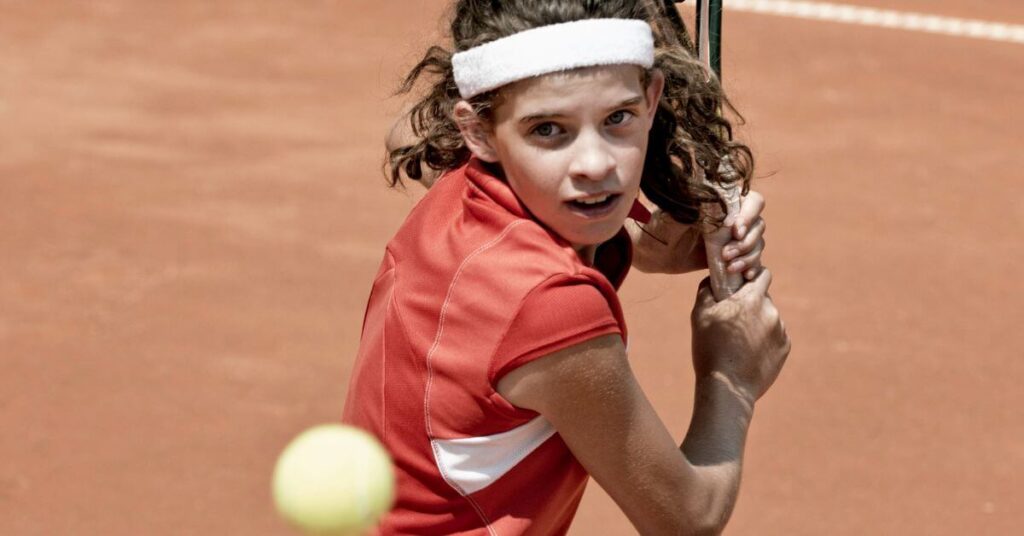When I first picked up a tennis racket, I was completely overwhelmed by the number of techniques and strokes that seemed so effortless when professionals did them. But one shot that always fascinated—and frustrated—me was the backhand. Over time, I learned that mastering how to do a backhand tennis wasn’t just about raw power; it was about timing, footwork, and confidence.
If you’re here, maybe you’re like I was—curious, struggling a bit, and ready to learn. So, let’s walk through it together.
Table of Contents for How to Do a Backhand Tennis
Why the Backhand Matters in Tennis
Your backhand isn’t just a fancy move to impress spectators. It’s one of the most important shots in your tennis toolkit. Whether you’re rallying from the baseline or defending against a strong cross-court shot, your backhand gives you control, reach, and balance on the court. When I finally figured out how to do a backhand tennis, it changed my game entirely. Suddenly, I could return balls that previously felt impossible.
There are two main types of backhands: the one-handed and the two-handed. I started with the two-handed version because it offered me more stability, but I’ve experimented with both. Depending on your physical strength, reach, and comfort, you’ll eventually find the style that suits you best.
Let’s break it down, step-by-step.
The Foundation: Grip and Stance
The first time someone corrected my grip, I realised I’d been doing it wrong for weeks. Without the right grip, learning how to do a backhand tennis is like trying to run with your shoes on the wrong feet.
Choosing Your Grip
For a two-handed backhand, here’s what worked best for me:
- Dominant hand (bottom hand): Use the continental grip, like you’re holding a hammer.
- Non-dominant hand (top hand): Use an eastern forehand grip, which helps generate topspin and control.
If you’re going one-handed, stick with the eastern backhand grip. It took me a few practice sessions to get used to how this felt, but once it clicked, everything changed.
Get Your Stance Right
When I was learning how to do a backhand tennis, coaches often reminded me: “Set your feet before you swing.” And they were right.
Use a closed stance for better balance. Step across your body with your front foot (left foot if you’re right-handed), bend your knees, and keep your weight low. Your shoulders should turn early, preparing you for a strong and fluid motion.
I remember during a tennis camp week mornings session, our coach made us run footwork drills for nearly half the class. It was tiring—but effective. Within a few days, my backhand felt more grounded and powerful.
The Mechanics: Swing, Contact, and Follow-Through
Once your grip and stance are solid, it’s time to work on the actual swing. This is where the magic—and often the struggle—happens.
The Backswing
When I started, I often underestimated the backswing. A short, lazy backswing resulted in weak, inaccurate shots. You’ll want to rotate your shoulders and take your racket back early, pointing it towards the fence behind you. Keep your elbows relaxed and your non-dominant hand ready to help guide the racket.
If you’re serious about improving your backhand technique in steps, start by slowing things down. Isolate each part—the take-back, the contact point, and the follow-through—and repeat it until it feels natural. That’s how I built consistency.
The Contact Point
This was a game-changer for me: make contact with the ball slightly in front of your front foot. If you hit it too close to your body, you lose power and control.
When you’re learning how to do a backhand tennis, try focusing your eyes on the ball until the moment of contact. It sounds simple, but it took me a while to stop glancing at my target too soon.
When I finally managed hitting a backhand cleanly during a rally, I felt a rush of confidence. It was the first time I realized how much potential this stroke had in my game.
The Follow-Through
A good follow-through makes your shot smoother and gives it more spin and direction. After contact, let your racket move upward and across your body. For two-handed backhands, both hands should finish near your opposite shoulder. For one-handed shots, your arm should extend fully, finishing high.
When I was trying to hit a backhand in tennis under pressure during a match, I noticed I’d often rush the follow-through. Once I focused on finishing the shot completely, my accuracy dramatically improved.
Tips for Practicing Your Backhand
I can’t count how many balls I’ve hit into the net or out of bounds while figuring out how to do a backhand tennis. Improvement comes with patience and practice. Here are a few methods that worked wonders for me.
Shadow Swings
When I had no court access, I practiced at home in front of a mirror. Shadow swinging helped me engrain the right mechanics. I’d watch my form, make adjustments, and focus on muscle memory.
Use Drills and Ball Machines
A ball machine saved my sanity during solo practice sessions. I could hit 100 backhands in a row without waiting for a partner. If you’re training with a friend or coach, ask them to feed balls to your backhand side repeatedly so you can build consistency.
Record and Review Yourself
This might feel awkward at first, but filming myself helped me spot flaws in my form that I wasn’t aware of. I’d compare my footage to professional players or online tutorials. Slowly but surely, my technique improved.
At one point, I started working on developing an attacking backhand in tennis. This meant stepping into the ball more aggressively, aiming for deep cross-court angles or down-the-line winners. It required more confidence—but it paid off when I used it in match play.
Common Mistakes and How to Avoid Them
Over the years, I’ve made all the classic errors. Here are a few I learned to correct—maybe they’ll help you too.
Mistake 1: Relying Only on Arms
I used to swing just with my arms, and my shots lacked power. The key is to use your whole body. Rotate your hips and shoulders, and engage your core.
Mistake 2: Poor Footwork
If you don’t move your feet into position, you’re setting yourself up for a bad shot. I had to train myself to stay light on my toes and adjust quickly. Footwork drills helped me a lot.
When I joined a week mornings adults tennis group at my local club, those early sessions forced me to move with better purpose. Even though we were mostly beginners, that steady weekly routine helped me improve faster.
Mistake 3: Inconsistent Grip
Sometimes, I’d forget to reset my tennis grip between points. Over time, I got in the habit of double-checking before each serve or return. Grip consistency makes a huge difference when you’re refining how to do a backhand tennis.
Building Confidence and Progressing
One of the best moments in my tennis journey was hitting a solid backhand winner during a match—it felt amazing. But it didn’t happen overnight.
To really feel comfortable with how to do a backhand tennis, you’ll need to:
- Keep practicing under pressure: Simulate match situations during practice.
- Mix up your shots: Practice both topspin and flat backhands.
- Play points with a backhand focus: Try games where you can only hit to your opponent’s backhand, and vice versa.
Tennis is a game of repetition and refinement. Every time you hit a backhand, you’re building toward mastery.
I even had the chance to visit the Fame Hall of Tennis, where I watched old footage of legendary backhands in action. It inspired me to elevate my own game. If they could do it with such grace and precision, so could I—with enough dedication.
More about how to do a backhand tennis
What Is the 4 Steps to Hitting a Backhand?
When I first learned how to do a backhand tennis, it all came down to four essential steps that completely transformed my game:
- Grip and Preparation – I always start by making sure I’ve got the right grip. For my two-handed backhand, I use the continental grip with my dominant hand and the eastern forehand grip with the other. Then, I turn my shoulders and prepare for the shot early—this sets everything in motion.
- Footwork and Stance – Honestly, this was the hardest part for me to master. You’ve got to move your feet into the right position, stepping across with your front foot and keeping your stance stable. Without good footwork, everything else falls apart.
- Swing and Contact – When I swing, I aim to make contact with the ball just in front of my body. Timing is everything. If I hit too early or too late, the shot loses its power and control.
- Follow Through – I used to stop my swing too soon, but a complete follow-through is where the magic happens. Now, I finish high and across my body, which gives my backhand that beautiful topspin and consistency.
That’s how I personally break it down whenever someone asks me about how to do a backhand tennis—4 steps that really work.
How to Properly Backhand Someone?
Okay, I know this question might be jokingly worded—but if you’re referring to sports like tennis or even martial arts, let’s stick to the non-violent, athletic version of “backhanding” someone.
If you’re talking tennis (and I hope you are!), learning how to do a backhand tennis properly comes down to control, precision, and posture. I always try to stay balanced, use the correct grip, and rotate my shoulders to generate that effortless power.
If you’re aiming to “backhand” someone in a competitive tennis match with flair (and a little friendly dominance), the best way is to master your technique so well that your shot lands right on the line. Nothing feels more satisfying than watching your opponent scramble while you nail a clean, confident backhand!
How to Have a Good Backhand?
When I wanted a good backhand, not just a functional one, I really had to focus on refining the details of how to do a backhand tennis. For me, that meant a few specific things:
- Consistency – I practiced the shot every time I got on the court, even when I wanted to focus on forehands. Repetition built confidence.
- Footwork – I can’t say this enough: positioning yourself correctly makes your backhand 10x more effective. Quick side-steps and low knees are a must.
- Topspin Control – Learning how to brush up the back of the ball gave me control and depth. I no longer feared hitting long or into the net.
- Mental Focus – I used to overthink my backhand during matches. Once I stopped worrying and trusted my training, the shot improved dramatically.
So, if you’re looking to really have a good backhand, take it from someone who’s been there—mastering how to do a backhand tennis well is all about the small adjustments that make a big impact.
How to Do a Backhand Serve in Tennis?
Ah, the backhand serve—a tricky but fun variation! While not part of standard serving technique, some players use a backhand-like motion for slice or underhand serves. When I first experimented with this during a casual game, I realized that understanding how to do a backhand tennis gave me a foundation for being creative with my tennis serve.
If you’re trying something like a backhand serve, here’s what I found useful:
- Grip Matters – I start with a continental grip to allow for maximum wrist flexibility.
- Swing from Below – Instead of tossing the ball high, I keep it low and let my racket swing underhanded in a motion similar to my regular backhand follow-through.
- Element of Surprise – It’s great for catching your opponent off-guard—especially during social matches or when mixing things up.
It’s not a technique you’ll see every day in competitive play, but experimenting with different styles helped me understand how diverse and creative tennis can be. And all of it ties back to one thing: learning how to do a backhand tennis with confidence and control.
Mastering Backhand Technique & Fluidity!
Final Thoughts on Learning How to Do a Backhand Tennis
If you’re struggling to learn how to do a backhand tennis, I promise you’re not alone. Every tennis player—whether beginner or seasoned—has battled with this shot at some point. But through persistence, smart practice, and a bit of patience, you’ll get there.
I’ve personally gone from flailing at balls with a clumsy swing to confidently placing cross-court backhands during tough matches. You can too. Focus on fundamentals, be open to feedback, and most importantly—have fun with it. Tennis isn’t just about technique; it’s about enjoying the journey.
Whether you’re on your first day or your hundredth practice session, keep swinging. Your perfect backhand is just a few strokes away.









